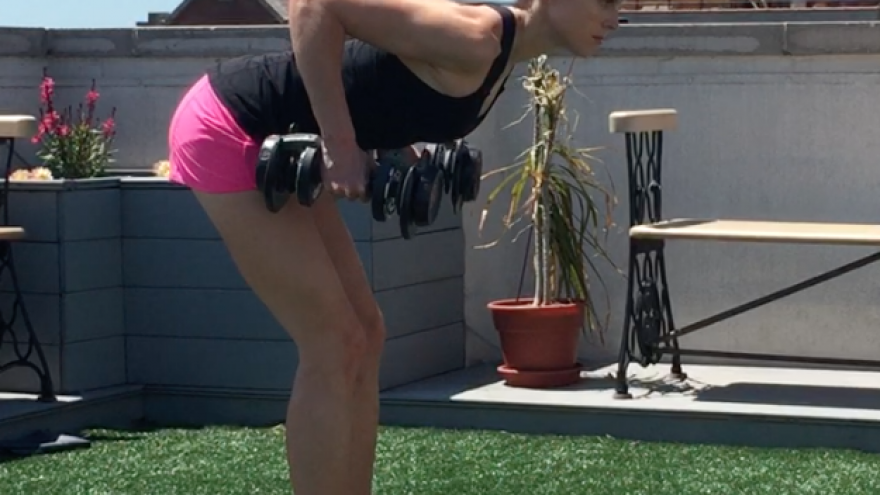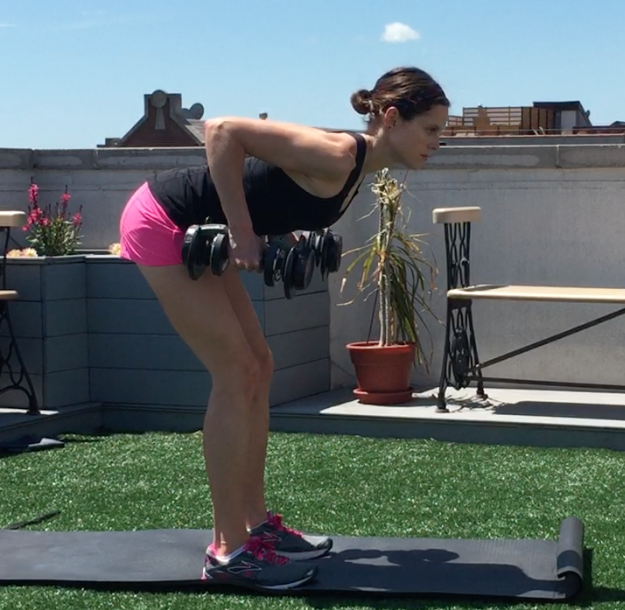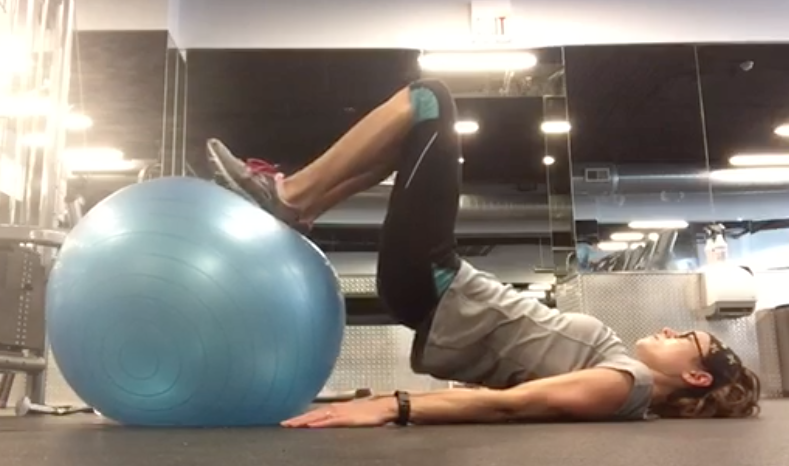Strength Train Your Way to a PR!

As runners, we tend to put strength training on the back-burner. Why spend time in the weight room when you could spend that time pounding the pavement? Turns out, strength training could not only be the key to a PR, but your protection from injury as well.

Strength Training and Injury Prevention
Running is insanely repetitive. You’re nearly using the same muscles in practically the same way every time you lace up, which means there are muscles you aren’t using on said runs. This leads to muscular imbalances in the body which, in turn, lead to injury. Runner’s World contributor and marathon expert Amby Burfoot tells readers about biomechanist and head of the Running Injury Clinic at the University of Calgery, Reed Ferber, PH.D., “He claims his clinic has cured 92 percent of knee injuries with a hip regimen. ‘Strengthening the hips is optimal for effective rehabilitation, as opposed to treating the area where the pain is located (e.g., your knee)…When you strengthen the hips—the abductors, adductors, and gluteus maximus—you increase your leg stability all the way down to the ankle.‘” (Runnersworld.com)
Everything is connected, so one weak link is going to effect your running in some way. Strengthening the areas – especially the core, hips and glutes – that aren’t particularly worked on the run, translates to better running form which protects you from muscle imbalances leading to common injuries.
Strength Training and Better Running
Since strength training increases your ability to run with correct form for longer periods of time, this improves your running efficiency, leading to faster times. A strong core keeps you from hunching, making it easier to breathe, and strong glutes make it easier to recruit the right muscles for pushing off the ground. With less wasted energy, you’ll find you fatigue later and recover faster.
As Sabrina Grotewold explains, “A well-trained, efficient body uses less oxygen to power muscles when you’re pushing the pace, so you’ll be able to run harder for longer. A study in the Journal of Strength and Conditioning Research examined the effects of a 10-week strength training program on running economy in female distance runners. The group who added three strength training workouts in addition to their running programs saw significant improvement in running economy.” (Active.com)

How to Get Started
If you’re like most runners, you don’t have a ton of time to devote to strength training. I know when I’m marathon training, my time outside of running and working is limited so I hear you! Luckily, you can get the benefits of strength training with 2-3 30-minute sessions a week, and you don’t even need a gym or equipment.
I like to put focus on strengthening the core and hips/glutes, along with plyometric exercises. Here’s why:
Core – Ideal running form consists of a level pelvis (think shoulders over hips, hips over feet), and keeping your pelvis in place relies on the support of your core. Another aspect of good form running is an open chest – i.e. not hunching at the waist – making it easier to get full breathes, and a strong core makes it easier to do this.
Glutes/Hips – The glutes are your powerhouse when it comes to running. Having a strong backside makes propelling forward off the pavement – especially on hilly routes – easier and more efficient. Katie Larson, a physical therapist in MN, tells blogger and runner Nathan Freeburg, “Glute strength is very important because it controls the entire lower leg and provides stability. If there is no stability, your legs can’t generate power. If you have weakness, other parts of your body try to provide stability and therefor you will have compensation and poor mechanics.” (Minneapolisrunning.com)
Plyometrics – “Plyometrics are exercises that aim to develop strength and speed by conditioning the neuromuscular and elastic characteristics of the muscle. The main objective of plyometric training for runners is to produce greater power by training the muscles to contract more quickly and forcefully from an actively pre-stretched position.” Jeff Gaudette, competitor.com. Think box jumps, burpees and tuck jumps, all explosive exercises that rely on quick muscle recruitment and maximum power output.
No gym? No problem! Here are my favorite bodyweight exercises for stronger running (click on each for a video demo):
Core Focused
Plank Toe Touches
Plank Hip Dips
Reverse Crunches
Glute/Hips Focused
Single Glute Bridges
Split Squats
Side/Lateral Lunges
Fire Hydrant/Donkey Kick
Plyometrics
Lunge Hops
Skaters
Tuck Jumps
180 Squat Jumps
Put them together in a circuit on your off days or after an easy run! Here’s an example:
Single Glute Bridges X12
Reverse CrunchesX12
Skaters :45 seconds
Side Lunges X10
Tuck Jumps :45 seconds
Do each exercise in order, complete 3 times through.
Want more strength training ideas? Check out the workout section of my blog, featuring tons of bodyweight circuits you can do at home!
What’s your favorite way to strength train?
How do you fit it in while training for a race?
Latest Articles
 Is Running on a Treadmill Easier Than Running Outside?Runners have their own preferences, whether it is treadmill running, running outside on the road, or exploring trails. So...
Is Running on a Treadmill Easier Than Running Outside?Runners have their own preferences, whether it is treadmill running, running outside on the road, or exploring trails. So... Is It OK to Use Trail Running Shoes on the Road?While trail running shoes can be used on roads, especially in situations where a runner encounters mixed terrains or pref...
Is It OK to Use Trail Running Shoes on the Road?While trail running shoes can be used on roads, especially in situations where a runner encounters mixed terrains or pref... How to Fix Sore Quads After Running?Rest, ice, gentle stretching, and over-the-counter pain relievers can help soothe sore quads after running. Also, ensure ...
How to Fix Sore Quads After Running?Rest, ice, gentle stretching, and over-the-counter pain relievers can help soothe sore quads after running. Also, ensure ... 10 Fruits With The Most Electrolytes to Replace Sports DrinksThese fruits are high in electrolytes such as potassium, magnesium, and calcium, essential for hydration, muscle function...
10 Fruits With The Most Electrolytes to Replace Sports DrinksThese fruits are high in electrolytes such as potassium, magnesium, and calcium, essential for hydration, muscle function...

